
This article is part of our ongoing series, Changing Weather, focused on innovations in local weather coverage. This is the second of two reports highlighting free resources designed to help your newsroom bring the climate change story home to your viewers.
Matchmaking in the 21st century is not just for dating or job searching. Why not match journalists with expert sources?
“A lot of issues that are important to communities, whether it’s pollution from a local manufacturing plant, or extreme weather as it’s linked to climate change, are now being covered by reporters who don’t have a background in science, health or the environment,” said Becky Hazen, Associate Director for SciLine, a nonprofit service connecting journalists and scientists. And not surprisingly, SciLine saw a huge surge in the number of requests during the pandemic. “Suddenly every local reporter in America became a science reporter or a health reporter,” said Hazen. “Sometimes, finding a credible source is really tough. If you’re not a science reporter you don’t know who to call.”
That’s where SciLine steps in, matching any journalist who is looking for a scientist for an upcoming story with an expert from its extensive database of 23,000 researchers. For TV journalists specifically, SciLine also coordinates broadcast quality, one-on-one interviews with experts, adding scientific context to current topics in the news.
“We have an in-house team of Ph.D. and master’s level scientists who will actually do the research to find the exact right expert who’s perfectly matched to the reporter’s needs, so we do all that on a one-on-one individual basis,” Hazen said. SciLine guarantees the team will get back to you within 15 minutes (between 8 a.m. and 8 p.m. EST) after a journalist has submitted a request to discuss his or her reporting needs.
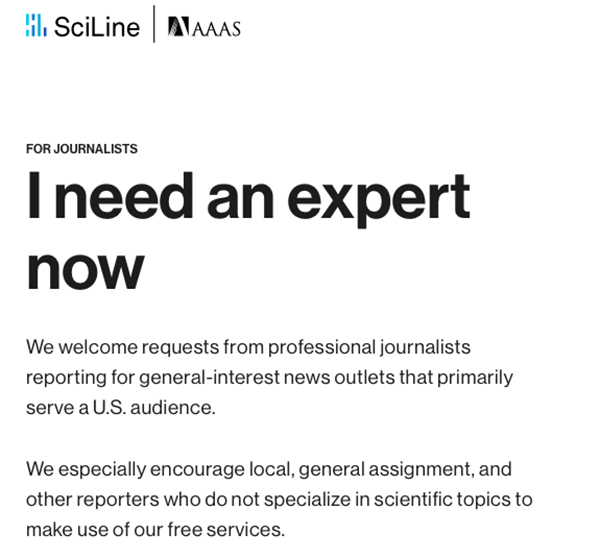
Founded in 2017 by former Washington Post science reporter Rick Weiss, SciLine has fulfilled close to 2,000 requests from about 650 journalists across all areas of science: not just climate, health, biology, astronomy and so on, but even some social sciences like economics. Based at the American Association for the Advancement of Science (AAAS), SciLine is editorially independent and nonpartisan, funded by philanthropic donations. Scientists are not compensated for their participation; instead, SciLine offers them media training and helps pitch their research to reporters.
Jim Morelli, a reporter at Boston’s WFXT, became an avid SciLine user after discovering the organization in March. “I thought, wait a second, they’re going to get the experts if I need them,” said Morelli. “You have got to be kidding me. It is so hard to get doctors to call you back, and I work on a daily deadlines basis, so I’m constantly calling hospital PR departments.”

Morelli has a bachelor’s degree in pharmacy and later got a master’s degree in civil engineering. With his science background, he’s been his station’s go-to reporter for COVID-19. “I hit them [SciLine] at least once a week, and I always apologize to them. I always say ‘Look, I’m really sorry.’”
But Hazen said that’s exactly why SciLine is there: “The pandemic has only underscored why our mission is so important. Our mission is getting more science and evidence into the news.”
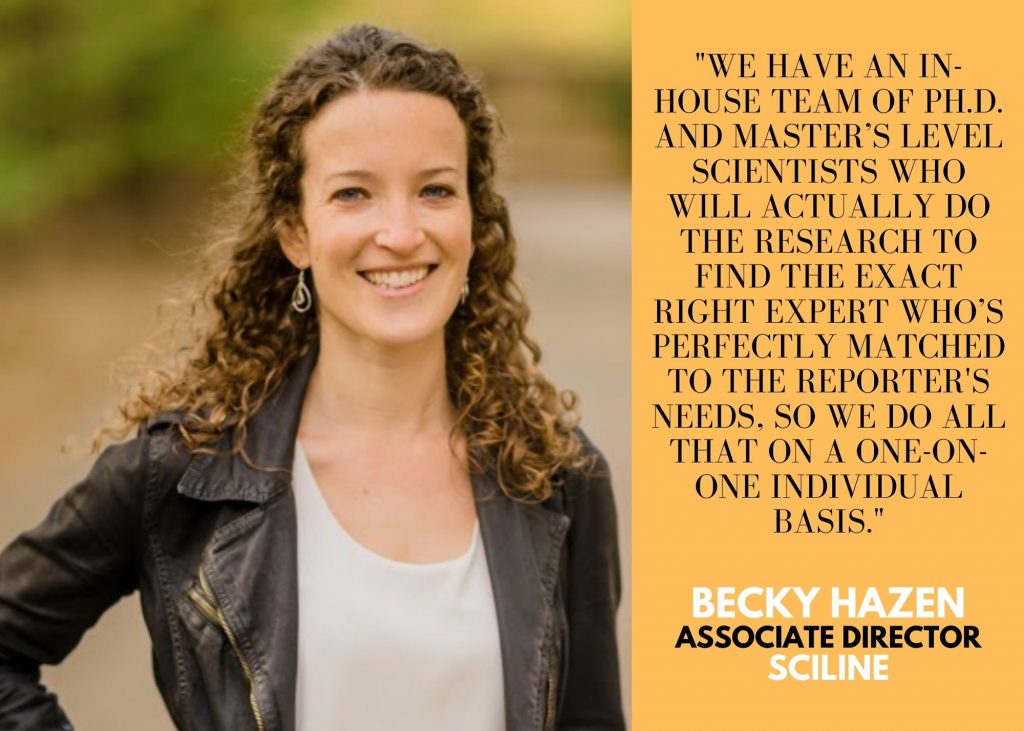
During the pandemic, audiences turned to local news for trustworthy information. Respondents in SmithGeiger research in March 2020 ranked the strength of local news’s pandemic “performance” higher than the CDC, the Federal Government or the White House. And, among local TV, radio, print or digital newspapers, audiences turned to TV first.
“There are lots of places that don’t have a local newspaper anymore, and so local TV is the only local news that’s left, “said Sara Brinda, the local media outreach manager at SciLine.
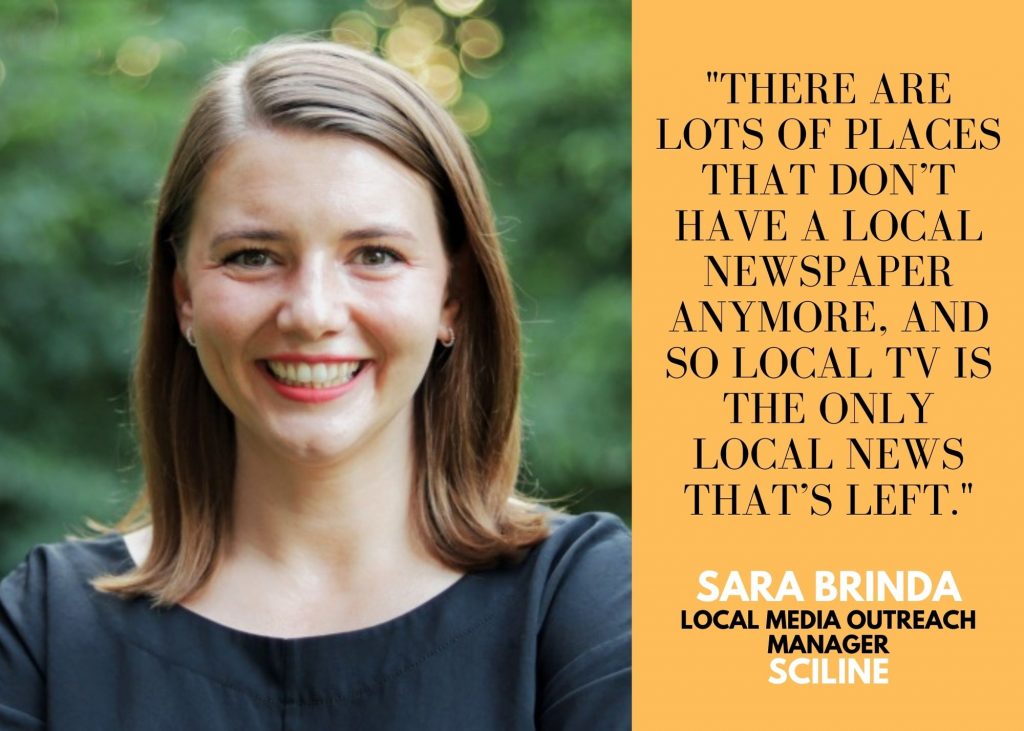
Brinda said that’s why SciLine developed Experts On Camera, a free service designed specifically with television reporters in mind. The SciLine team follows trending topics in the news and invites scientists who can speak in depth to those issues, contextualizing drought, water conservation, violent crime, and more. Experts On Camera bypasses the traditional PR process. Reporters can sign up for a 15-minute time slot to speak with the featured scientist. Every scientist participating in Experts On Camera is even sent an AV equipment kit with resources such as lights to guarantee interviews are up to broadcast quality.
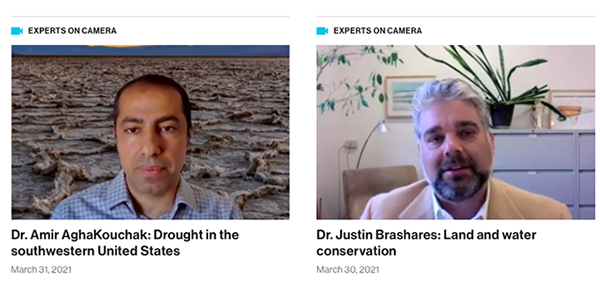
Ensuring that scientists in the SciLine database not only look good but sound good is a priority for the team. On top of vetting for scientific excellence, published research, and active projects, SciLine evaluates the communication skills of the scientists it recommends. The team looks at clips from lectures or a Ted Talk to determine their skill level. “We’re actually collecting information about whether those experts could be referred to a TV reporter, a radio reporter, or a print journalist,” said Hazen. “We know that it takes different skill sets and levels of experience to be interviewed for different types of media platforms.”
In addition to SciLine’s expert matching service and the Experts On Camera program, the organization offers several other free resources for journalists. These include; general media briefings, expert quotes to pull from for stories, crash courses, in-person workshops with panels or field trips on science topics, and quick fact sheets on science-related issues in the news.
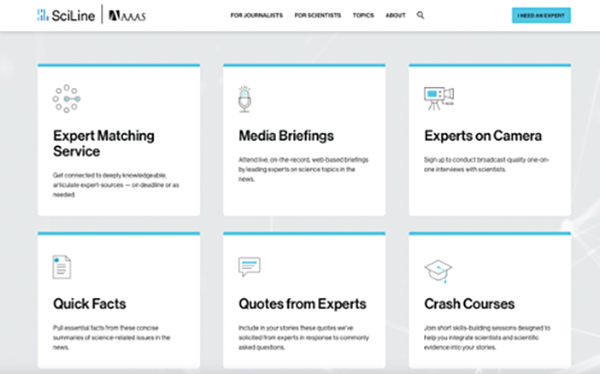
While SciLine covers all science disciplines, it knows that climate change is top of mind for reporters. It has a partnership with another nonprofit, Climate Communication, specifically to develop climate-centric quick fact sheets.
“In some cases, scientists can now say with increasing confidence whether a particular weather event was more likely to happen because of climate change or not,” said Hazen. “We want to make sure that reporters have at their fingertips science-based insights.”
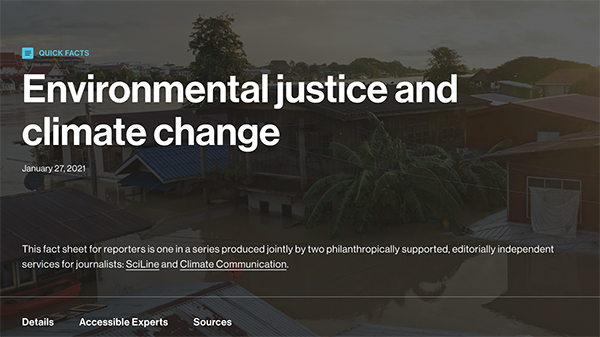
Morelli believes incorporating accurate science into more news stories is important for the future of journalism.“We now have to rebuild this trust. Part of doing that is making sure we get science right, we understand people’s fears, and we try to address those fears,” said Morelli. “You do it with the facts, and SciLine has helped me do that.”
“I think that scientists and journalists are a lot more alike than they may think. Both professions are all about fact-finding and uncovering the truth,” said Hazen. “We’re looking for opportunities to bridge those gaps and to help scientists and journalists better understand each other’s profession. We think that when they cooperate everyone stands to benefit: the reporter, the scientists, and the public.”
To request an expert, review a fact sheet, or sign up for an upcoming media briefing, visit SciLine’s website.
If you know an organization or meteorologist whose work should be featured in our ongoing series, please send us an email at cronkitenewslab@asu.edu.
Get the Lab Report: The most important stories delivered to your inbox